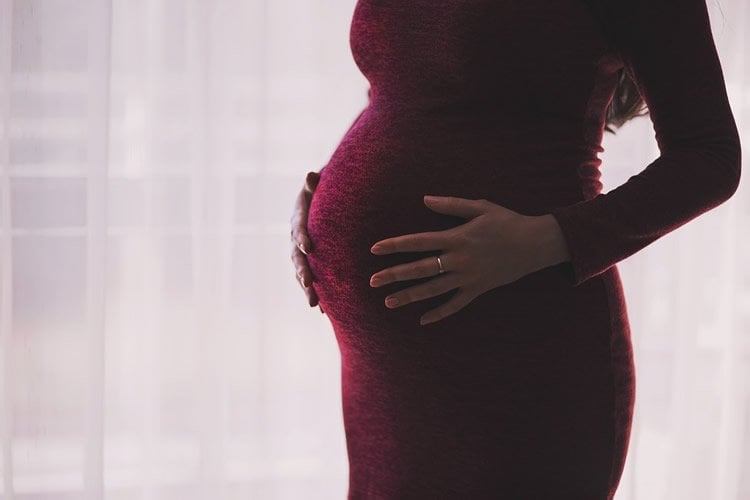Summary: A new study reports women who are in their third trimester of pregnancy during months with less day light are at an increased risk of developing postnatal depression.
Source: Springer.
Women in late pregnancy during darker months of the year may have a greater risk of developing postpartum depression once their babies are born. This is consistent with what is known about the relationship between exposure to natural light and depression among adults in the general population. Deepika Goyal of San José State University in the US is the lead author of a study published in a special issue “Post-partum Health” in Springer’s Journal of Behavioral Medicine. The findings of Goyal and her colleagues should lead clinicians to encourage at-risk women to increase their exposure to natural daylight and vitamin D.
Although reduced exposure to natural light has been associated with depression among adults in the general population, there is not yet a consensus about whether light exposure or seasonality influences the development of depression during and after pregnancy.
In this study, Goyal and her colleagues at the University of California San Francisco analysed available information from 293 women who participated in one of two randomized controlled clinical trials about sleep before and after pregnancy. The participants were all first-time mothers from the US state of California. Data included the amount of daylight during the final trimester of their pregnancy, along with information about known risk factors such as a history of depression, the woman’s age, her socioeconomic status and how much she slept.
Overall, the participants had a 30 per cent risk of depression. The analysis suggested that the number of daylight hours a woman was exposed to during her final month of pregnancy and just after birth had a major influence on the likelihood that she developed depressive symptoms.
The lowest risk for depression (26 per cent) occurred among women whose final trimester coincided with seasons with longer daylight hours. Depression scores were highest (35 per cent) among women whose final trimester coincided with “short” days and the symptoms continued to be more severe following the birth of their babies in this group of women. In the northern hemisphere, this timeframe refers to the months of August to the first four days of November (late summer to early autumn).
“Among first-time mothers, the length of day in the third trimester, specifically day lengths that are shortening compared to day lengths that are short, long or lengthening, were associated with concurrent depressive symptom severity,” Goyal explains.

The findings suggest that using light treatment in the late third trimester when seasonal day length is shortening could minimize postpartum depressive symptoms in high-risk mothers during the first three months of their children’s lives. Goyal says that women with a history of mental health problems and those who are already experiencing depressive symptoms in the third trimester might further benefit from being outdoors when possible, or using devices such as light boxes that provide light therapy.
“Women should be encouraged to get frequent exposure to daylight throughout their pregnancies to enhance their vitamin D levels and to suppress the hormone melatonin,” adds Goyal, who says that clinicians should also advise their patients to get more exercise outdoors when weather and safety permit. “Daily walks during daylight hours may be more effective in improving mood than walking inside a shopping mall or using a treadmill in a gym. Likewise, early morning or late evening walks may be relaxing but would be less effective in increasing vitamin D exposure or suppressing melatonin.”
Source: Elizabeth Hawkins – Springer
Publisher: Organized by NeuroscienceNews.com.
Image Source: NeuroscienceNews.com image is in the public domain.
Original Research: Open access research for “Shortening day length: a potential risk factor for perinatal depression” by Deepika Goyal, Caryl Gay, Rosamar Torres, and Kathryn Lee in Journal of Behavioral Medicine. Published September 27 2018.
doi:10.1007/s1086
[cbtabs][cbtab title=”MLA”]Springer”Postnatal Depression Could be Linked to Fewer Daylight Hours During Late Pregnancy.” NeuroscienceNews. NeuroscienceNews, 27 September 2018.
<https://neurosciencenews.com/pnd-light-pregnancy-9924/>.[/cbtab][cbtab title=”APA”]Springer(2018, September 27). Postnatal Depression Could be Linked to Fewer Daylight Hours During Late Pregnancy. NeuroscienceNews. Retrieved September 27, 2018 from https://neurosciencenews.com/pnd-light-pregnancy-9924/[/cbtab][cbtab title=”Chicago”]Springer”Postnatal Depression Could be Linked to Fewer Daylight Hours During Late Pregnancy.” https://neurosciencenews.com/pnd-light-pregnancy-9924/ (accessed September 27, 2018).[/cbtab][/cbtabs]
Abstract
Shortening day length: a potential risk factor for perinatal depression
The aim of this secondary analysis was to determine whether seasonal light exposure, categorized by type of day length, is associated with or predictive of depressive symptoms in late pregnancy and the first 3 months postpartum. Women (n = 279) expecting their first child were recruited from prenatal clinics and childbirth education classes. Depressive symptoms were assessed with the Center for Epidemiologic Studies Depression Scale. Day lengths were categorized into short, lengthening, long and shortening. Data analysis included linear mixed models and multiple linear regression. When days were shortening (August to first 4 days of November) in late third trimester, depressive symptom scores were highest (35%) and continued to be higher at each postpartum assessment compared to other day length categories. Implications for clinical practice include increased vigilance for depressive symptoms, particularly if late pregnancy and birth occurs during the 3 months around the Autumn equinox when day length is shortening. Strategies that increase light exposure in late pregnancy and postpartum should also be considered.






